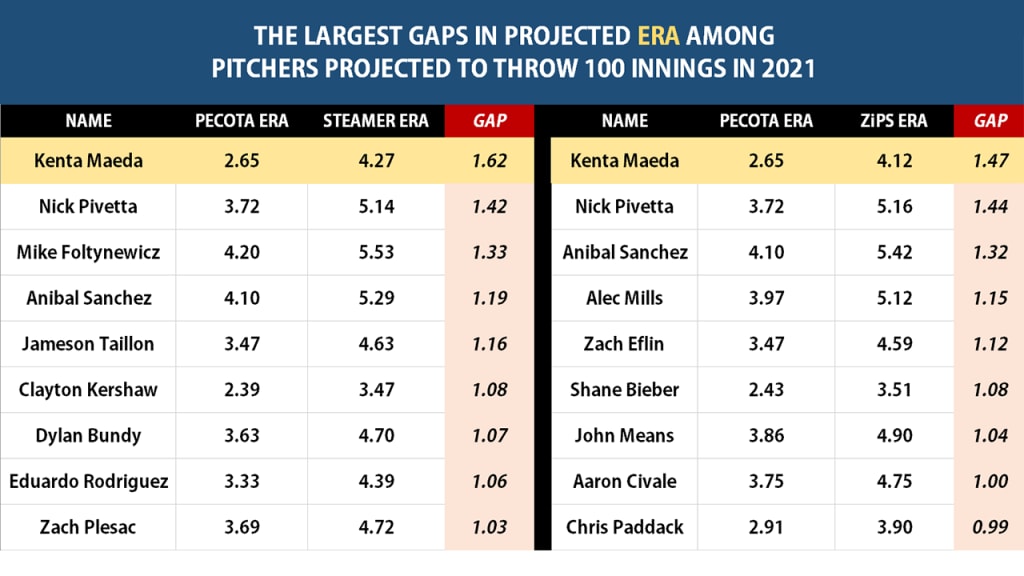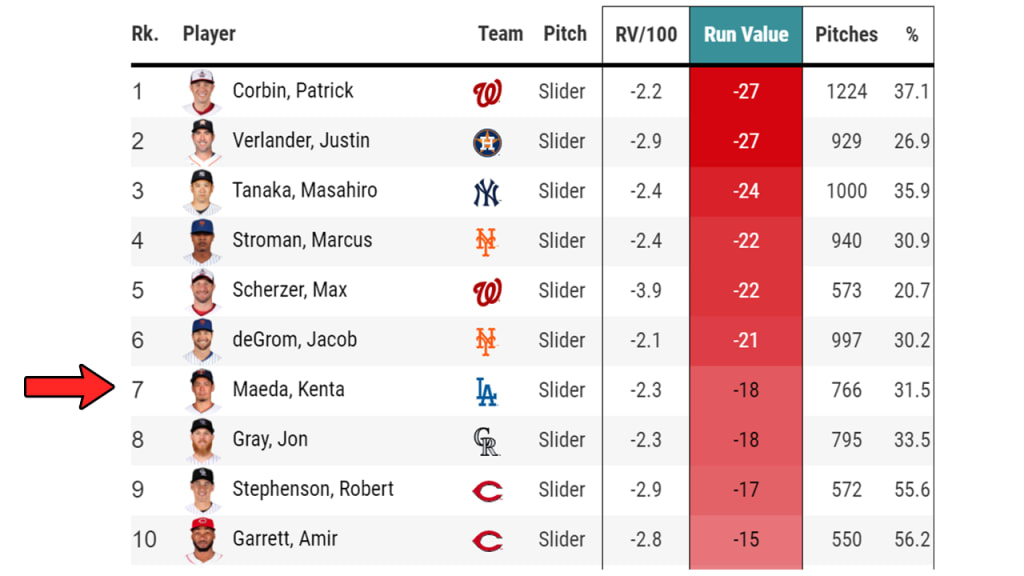Kenta Maeda was pretty solid in four years as a Dodger, posting a 3.87 ERA in 589 regular-season innings, plus earning a growing reputation as an October relief weapon (a 1.64 ERA in 21 relief appearances from 2017-19). In 2020, his first year with the Twins, he was considerably better than that, posting a 2.70 ERA, a career-high strikeout rate (32.3%) along with a career-low walk rate (4%). He finished second in the American League Cy Young Award balloting to Shane Bieber.
Given the uncertainties of the short 2020 season and the hype fueling the ready-to-win White Sox as they seek their first AL Central title since 2008, what you, the enterprising Twins fan, wants to know, is simple: Was it real? Can he do it again? Minnesota won the Central by a single game last year. Most expect the 2021 race to be a tight one, too. While the Sox added a top starter in Lance Lynn, Minnesota opted for depth in the form of J.A. Happ and Matt Shoemaker. Whether or not Maeda is an "ace" or "a mid-rotation starter" matters greatly.
Interestingly, the various major projection systems differ considerably on that question.
That's a tremendously large gap, one large enough to possibly decide Minnesota's season if the White Sox are as good as advertised and this is a neck-and-neck race.
In fact, it's such a large gap that we needed to see if it's the largest. There were 118 pitchers projected by both Steamer and PECOTA to throw 100 innings in 2021, and a similar 120 pitchers given 100-plus innings by both ZiPS and PECOTA. No one had a larger gap in projected ERA, though Red Sox right-hander Nick Pivetta showed a similar gap.

So which pitcher will he be? The cop-out answer is "in the middle," and that's probably right; over the past three seasons, as a starter, Maeda has a 3.73 ERA. Forced to choose, we'd lean closer to PECOTA's very rosy forecast, but also it's a little difficult to see a 2.65 ERA when he's turning 33 in April and hasn't actually ever done that before. PECOTA has him as 2021's fifth-best starter; we, personally, would say something more like "15th-best," which, to be clear, is still extremely good.
Still, since we often like to overcomplicate things around here, let's deeply oversimplify Maeda's 2020 breakout in three simple steps.
1) In four years as a Dodger, Maeda was very good against righties, but was considerably less effective against lefties. Among 99 righties who faced righty batters at least 750 times, his .199/.251/.339 was third best. He was more middle of the pack against lefties.
2) His most dominant pitch is his slider, which, in 2019, was one of the most valuable sliders in the game, surrounded by some of the top pitchers in baseball. (This version of pitch value differs from others in that it's not just based on outcomes of at-bats, but also the value of pitches that don't end a plate appearance. Strikes are important!)

3) Maeda took his best pitch and threw it against lefties ... a lot more. Three times more, really. Maeda took the four-seamer that lefties had regularly plastered -- .307 batting average and .543 slugging in the previous four seasons -- and diminished it to his third pitch.

As we said, slightly oversimplifying -- it's always too tempting to go find That One Weird Trick that saved the day, and it's not like he didn't do better than usual against righties as well -- but it's also not like this is a small thing here. It mattered.
In fact, that's been part of the story for a few years. Maeda's four-seamer has never been terribly impressive, really. At 91.6 mph, it has below-average velocity, and in terms of spin and movement, it's entirely average. As the art of pitching has largely moved away from "you must establish your fastball!" and into "what's your best pitch, throw that a lot," no starter in the game in 2020 threw fastballs less often.
Lowest fastball percent, starters, min. 500 total pitches, 2020
28.5% -- Kenta Maeda, MIN
31.6% -- Masahiro Tanaka, NYY
33.5% -- Kyle Freeland, COL
37.6% -- Zach Plesac, CLE
38.5% -- Carlos Carrasco, CLE
40.8% -- Zack Greinke, HOU
41.1% -- Clayton Kershaw, LAD
There's some similar stories here. Tanaka, Greinke, Carrasco and Kershaw all fit the mold of pitchers adapting to the later parts of their careers, knowing that the fastball velocity they may have had a decade ago is no longer there.
Maeda is in that age bracket, too, but so far as velocity goes, he never had it, really. Way back in 2015, when Maeda was about to be posted to the Majors but hadn't yet joined the Dodgers, Eno Sarris, then of FanGraphs, wrote about the scouting reports he could come up with from Maeda's time in Japan. While praising his slider and changeup, Sarris wrote this about his fastball: "In this context, the velocity is terrible. There’s no other way to say it. Average his pitches, and he’s in the 20th percentile. He’ll need all that movement and command to make it work on this side of the pond."
He has made it work, obviously. Thing is, Maeda isn't done yet.
"Maeda noted to Japanese media on Thursday that he's looking to add another primary pitch to his arsenal," wrote MLB.com's Do-Hyoung Park on Feb. 19, noting that the new pitch would either be a cutter, two-seam fastball or curveball -- all pitches he'd thrown sparingly at points in the past. Last week, we learned the answer: curveball.
"I don't think the curveball's going to be my payoff pitch with two strikes, but concentrating on the command, I'd like it to be a pitch that I can control to get strikes consistently," Maeda said on March 4. On Tuesday against the Orioles, he showed what it might look like.
The thing Maeda has always done, consistently, all the time, is to limit hard contact. Dating back to his 2016 debut, there have been 312 pitchers to face at least 200 batters, and Maeda's 28% hard-hit rate -- that's the percent of batted balls hit 95 mph or harder, the range where damage can really be done -- is second best, tied for second anyway.
That continued in 2020, but what changed was the increase in strikeout rate, the slicing of walk rate and an improved ground-ball rate -- not so coincidentally, the four-seam, aside from being hit hard, wasn't being hit on the ground. The open question isn't so much "was 2020 real?" because it seems like it was. (Park notes that the 2.70 ERA almost matched exactly his 2.73 xERA, which is a Statcast metric that looks at quality of contact and amount of contact, and it was similar to his 3.00 FIP.)
No, the question is more "can he just keep on doing that for six months rather than two?" Given that he didn't have fluky results in 2020, and that there were real underlying changes we can point to, and that it wasn't just -- or at all, really -- based on a velocity increase, we're optimistic that he can. Nor will it hurt that the Minnesota defense ought to be improved, with Andrelton Simmons at short and Jorge Polanco moved across to second.
So which projection are we buying? We can't say he's going to have a 2.65 ERA. He probably won't. But we'll take the under on a projected ERA over 4.00, too. Call it 80/20 toward the PECOTA side. Call it a 3.10-ish ERA kind of year. If he does that for six months, the Twins will be plenty happy. It might just be enough to hold off the White Sox and win a third consecutive division title.
